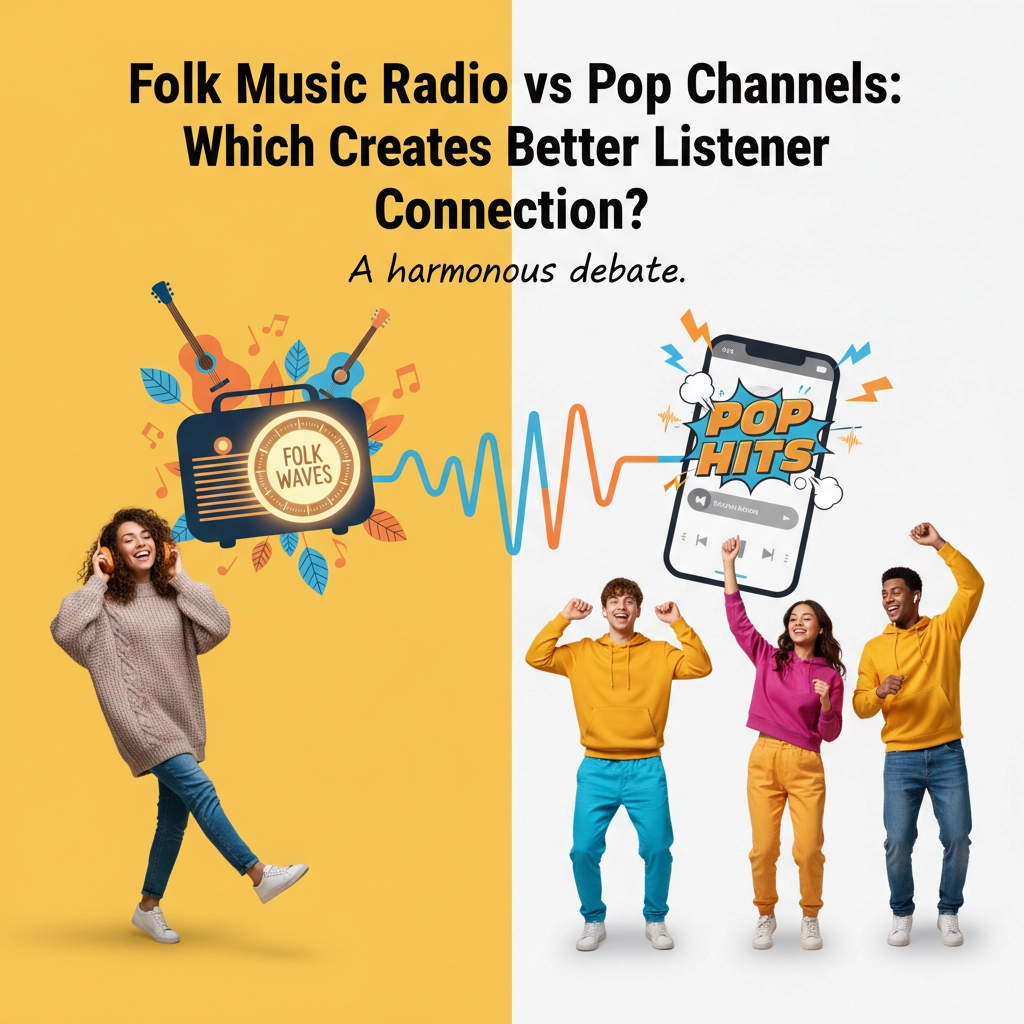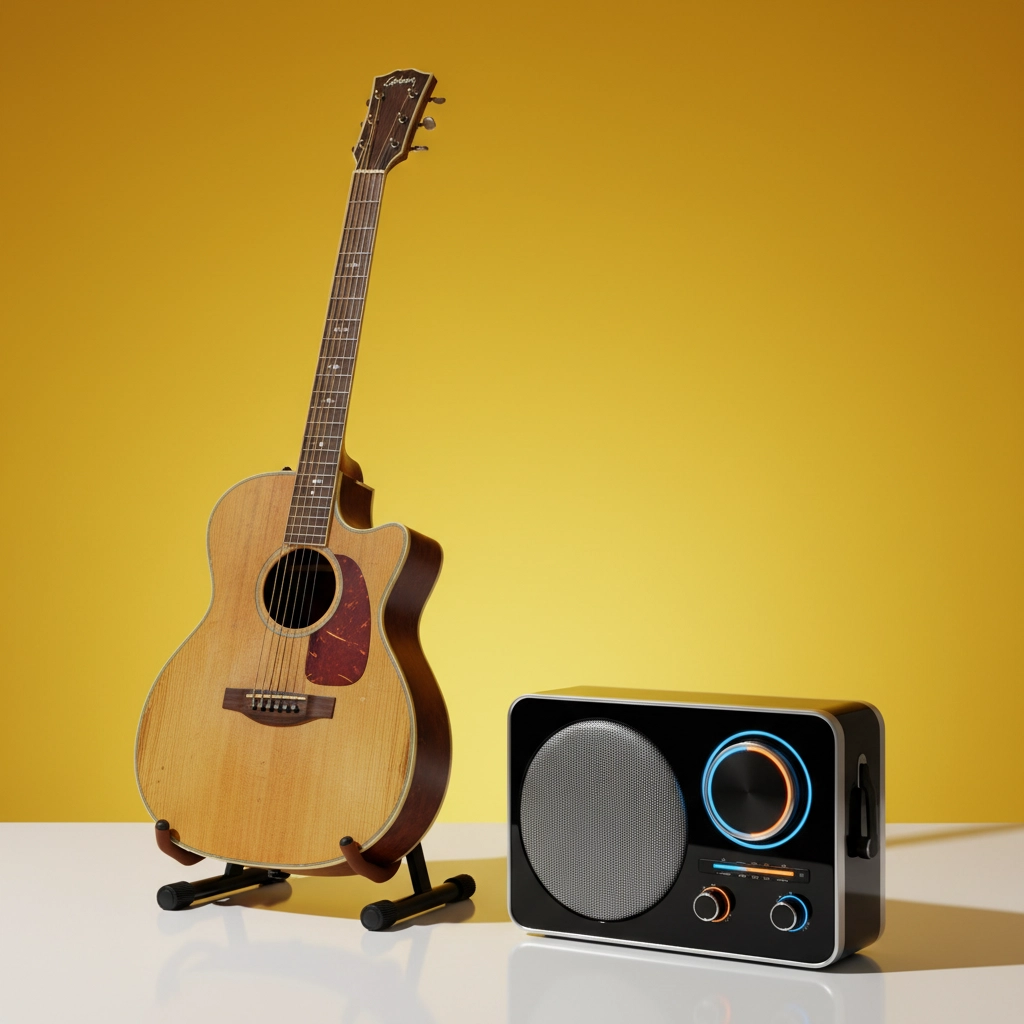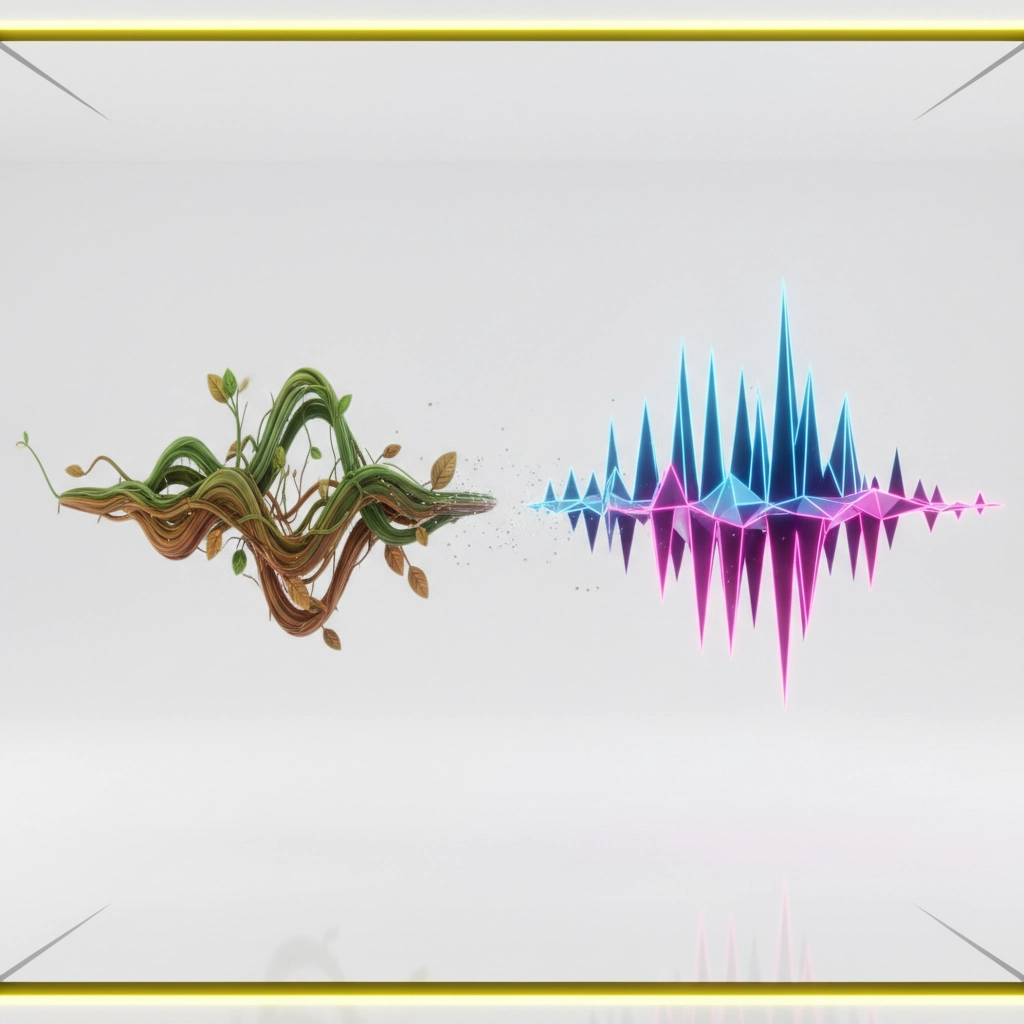Here’s a question that’ll make you rethink everything you know about radio: Which format actually creates deeper connections with listeners: folk music radio or mainstream pop channels?
If you’re assuming pop wins because of its massive reach, you’re about to discover why that logic is completely backwards. The data tells a fascinating story, and if you’re serious about understanding what builds genuine listener loyalty, you need to pay attention to what’s really happening in the radio landscape.
Folk Music Radio: The Quiet Revolution You’re Missing
Folk music radio is experiencing something remarkable right now. While you might think it’s a dying format, the numbers prove otherwise. Folk listenership has grown steadily from 11% to 13% between 2022 and 2023: and that growth trend has been consistent since 2021.
But here’s what those statistics don’t tell you: Folk radio creates connection through authenticity, not algorithms. When you tune into a folk music station, you’re not getting the heavily produced, focus-group-tested content that dominates mainstream radio. You’re getting organic sounds, meaningful lyrics, and minimalistic arrangements that give you space to actually think.
Think about the last time a song made you stop what you were doing. Was it a glossy pop single that sounded like everything else on the airwaves? Or was it something with real storytelling, where the artist’s voice cracked just slightly on an emotional line? Folk radio understands that connection happens in those imperfect, human moments.
The genre’s emphasis on storytelling creates what psychologists call “narrative transportation”: you don’t just hear the music, you experience it. And that’s exactly what builds lasting listener loyalty.

Pop Channels: The Familiarity Trap
Don’t get me wrong: pop radio knows how to grab attention. These stations excel at creating shared cultural moments through hit songs that become part of our collective consciousness. Pop channels build connection through familiarity, accessibility, and that undeniable energy that makes you turn up the volume.
But here’s the problem you need to understand: Pop radio has fallen into the homogenization trap. When every station plays similar content with similar energy, how do you create a unique connection with your audience? The answer is: you don’t.
Pop influences have spread across so many formats that differentiation has become nearly impossible. Country stations sound like pop stations. Rock stations lean heavily on pop-influenced tracks. Even alternative formats have been infiltrated by pop sensibilities. This similarity weakens the unique connection that listeners develop with specific stations.
If you can’t tell the difference between stations, why would you develop loyalty to any particular one? That’s the crisis facing pop radio right now, and most broadcasters are completely missing it.
The Traditional Radio Advantage (That Streaming Can’t Touch)
Here’s something that might surprise you: Regardless of whether you choose folk or pop, traditional radio offers connection-building features that streaming platforms simply cannot replicate.
Radio provides local information, community updates, and real-time content that creates immediate relevance. But more importantly, it facilitates parasocial relationships with radio hosts: that sense of friendship and familiarity that makes you feel like you know the voice coming through your speakers.
You can’t get that from Spotify or Apple Music, no matter how sophisticated their algorithms become.
Traditional radio serves as a vital hub for community engagement, going beyond music to strengthen the social fabric of the communities it serves. This local connection aspect benefits both folk and pop stations, though folk radio tends to leverage it more effectively due to its naturally community-oriented approach.

The Connection Comparison: What The Data Really Reveals
Let’s break down exactly how these formats stack up against each other:
Folk music radio creates connection through intimacy and authenticity. The content approach focuses on organic sounds and meaningful lyrics. The audience engagement is deep and thoughtful, with listeners making high emotional investments. The growth trend shows steady increases, and the community impact comes through strong local storytelling traditions.
Pop channels, on the other hand, create connection through energy and mass appeal. The content approach emphasizes polished production and catchy hooks. Audience engagement is broad and accessible, with high but potentially less distinctive listener loyalty. However, they’re facing serious differentiation challenges, though they maintain wide cultural influence.
Here’s what this means for you: If you’re looking for deep, lasting connections, folk radio is superior. If you want broad reach and cultural impact, pop channels excel: but they’re struggling with differentiation in an oversaturated market.
What This Means For Your Listening Experience
Stop settling for background noise. If you’re serious about experiencing real connection through radio, you need to understand that not all formats are created equal.
Folk music radio demands more from you as a listener. It asks you to pay attention, to engage with lyrics, to appreciate the craftsmanship behind minimalistic arrangements. But that investment pays dividends in terms of emotional satisfaction and genuine connection.
Pop channels offer immediate gratification and cultural currency. You’ll know the songs, you’ll have shared experiences with friends, and you’ll get that energy boost when your favorite hit comes on. But will you remember those songs in five years? Will they mean anything to you beyond nostalgia?
The choice isn’t just about music preference: it’s about what kind of relationship you want with your media consumption.
The Future of Radio Connection
Here’s what smart broadcasters are figuring out: The future belongs to stations that can incorporate folk radio’s authentic approach regardless of their primary format.
This means emphasizing local community connections, creating meaningful content, and leveraging the human element that traditional radio uniquely provides. If you’re not doing this, nothing serious will ever happen in terms of building genuine listener loyalty.
Imagine where the most successful radio stations will be in five years. They’ll be the ones that understood this principle early: Connection trumps convenience every single time.
Even stations that primarily play pop music can learn from folk radio’s approach to authenticity and community engagement. The key is understanding that listeners are hungry for something real in an increasingly artificial media landscape.
Your Next Move
Focus on finding stations that prioritize connection over convenience. Whether you’re drawn to folk programming or prefer mainstream content, seek out stations that offer local community connections, meaningful host interactions, and content that treats you like an intelligent human being rather than a demographic statistic.
And if you’re in broadcasting? Stop chasing the latest trends and start building genuine relationships with your audience. Learn from folk radio’s emphasis on authenticity and storytelling, even if your format is completely different.
The radio stations that will thrive in the coming years are the ones that understand this fundamental truth: genuine connection beats algorithmic precision every single time.
Start building that connection today( your audience is waiting for something real.)






